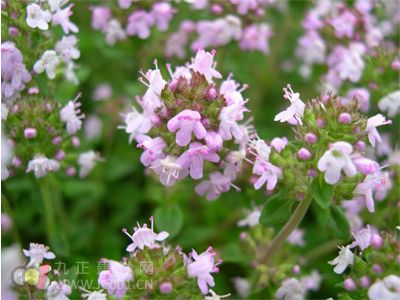Rosemary is an evergreen plant of the genus Rosemary. It is a herbaceous ornamental plant with a long history of cultivation. The branches and leaves are dense and the flower pigments are elegant. It can be used as a ground cover, a hedge, or a potted plant in a well-lit environment. The aroma of leaves and leaves has the effect of relieving people's nervous depression and enhancing memory.
Rosemary originated in the Mediterranean region. It enjoys a sunny and warm and dry environment. It is resistant to cold, inferiority and drought. It is afraid of water accumulation and is suitable for growing in well-drained, sandy soil containing lime.

The following points are noted in the cultivation of rosemary:
Reproduction:
Suitable breeding methods for rosemary include sowing, cutting, and beading. Rosemary seeds sprout slowly and have a low germination rate, usually only when new varieties are introduced. Asexual reproduction is often used for large-scale planting of conventional varieties. In small-scale production, the excellent plants with a length of 30 cm to 40 cm can be directly used as the mother plant, and a large number of side branches can be germinated by the topping for the collection of cuttings, and the shoots of the mother plants are 3 cm to 5 cm and 7 Un-ligated young shoots from 1 cm to 10 cm long can be used as cuttings.
After the cuttings are taken, the base leaves are cut and placed in a container filled with clean water for use. In large-scale production, it takes a lot of effort to take the cuttings yourself. The economical way is to buy the rootless cuttings directly from the quality seedlings.
The cutting substrate may be made of perlite, peat soil, loess, coarse river sand, etc., and a mixed matrix may also be used. In order to accelerate rooting, a rooting accelerator such as indole acetic acid or naphthalene acetic acid may be used.
During the rooting period, the suitable temperature in the greenhouse is 22 °C. It is necessary to spray the cuttings frequently, but too moist will cause the top of the cuttings to rot and the roots produced are not strong enough. In the first 10 to 14 days, the cuttings begin to take root, and special care should be taken to prevent the cuttings from wilting.
Transplanting:
After the cuttings are rooted, they are transplanted. Generally transplanted into a pot with a diameter of 10 cm, planted in a 10 cm pot for 6 to 10 weeks depending on the variety and season. During the period, trim in time to better grow the side branches, and do not exceed half the length of the branches each time.
Fertilizers used in rosemary are generally 14-4-14, preferably at a concentration of 125 ppm. During this period, the pH of the substrate is maintained at 5.8 to 6.2. If the pH is changed, in winter, nitrate nitrogen can be used instead of ammonium nitrogen. In general, the use of chelated iron can help maintain a suitable pH for the substrate.
Watering is the most critical technology in the process of growing rosemary. The basic principle is: If you are not sure if you should not pour it today, then pour it tomorrow. That is, rosemary is not afraid of wetness.
Pest management:
In humid environments, root rot, gray mold, etc. are common diseases of rosemary. If the culture substrate is still moist, the rosemary plants appear to be wilting and the plants need to be removed from the greenhouse immediately. The most common pests are red leafhopper and whitefly, and currently the most ideal method is to use biological control. Regardless of the pests and diseases, prevention is important. It can be started from the sanitary condition, proper water management, reasonable temperature and light, and it is necessary to observe and timely eliminate the weak strains.
Yucheng Weisite Measuring Tools Co., Ltd , https://www.wsttools.com